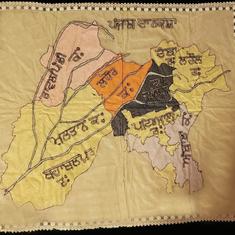Chief minister Prithviraj Chavan said it would be the tallest statue in the world but declined to say exactly what its height would be. The surface area of the bedrock on which the statue will stand is to be 16 hectares and it will rise three metres above sea level even during high tide, Chavan said.
Critics have pointed out that the money could be put to much better use in a city with crumbling infrastructure that houses 50 per cent of its population in slums.
This isn't the first time that a grandiose, controversial statue has been planned. Here are five others (if you missed the list, first posted on January 22):
1) The Equestrian in El Paso, Texas

The world's largest bronze equestrian statue is located at the entrance to the El Paso International airport in Texas, US. Only, some would wish it wasn't. It represents the violent Conquistador Don Juan de Onate, who arrived in El Paso in 1598 and went on to found the first Spanish settlement in New Mexico.
Before the 36-ft statue was unveiled in 2007, Native Americans in El Paso persuaded the El Paso City Council to change the statue's name to The Equestrian, arguing that Onate shouldn't be glorified as he was known for his brutality. When the native Indians in El Paso rebelled, he wiped out their village, killing hundreds of men, women and children, and had one leg cut off each male adult survivor.
2) The African Renaissance Monument in Dakar, Senegal

The 49-ft tall African Renaissance Monument outside Dakar, Senegal's capital, is the largest in Africa and the Senegal President Abdoulaye Wade's idea. A North Korean company built it based on a design by Senegalese architect Pierre Goudiaby. It was unveiled on April 4, 2010, the National Day of Senegal and the fiftieth anniversary of its independence from France.
Thousands of people protested against "all the failures of [President] Wade's regime, the least of which is this horrible statue" hours before the unveiling - the $27-mn statue was not very popular in a country in which half the population is below the poverty line. President Wade was also criticised for suggesting that 35 per cent of the revenue from the statue should go to him as the project was his idea.
3) The Miraculous Journey in Doha, Qatar

The series of 14 bronze sculptures by British artist Damien Hirst stands in front of the Sidra Medical and Research Centre. They depict the gestation of a fetus inside a uterus, from conception to birth. The last statue in the series is a 46-foot-tall baby boy in the nude -- a rather shocking sight in the conservative Middle East.
“I suppose the cultural differences are a bit difficult," Hirst told the 'Doha News'. "You know in England, there wouldn’t be a problem with a naked baby, you see the embryo and the egg and sperm. You know culturally, it’s the first naked sculpture in the Middle East.”
4) Genghis Khan near Ulan Bator, Mongolia

This 131-ft tall statue of Genghis, the great Mongolian conqueror, is the largest equestrian statue in the world and made of stainless steel. A Mongolian tourist company has spent about $4.1 million on the statue, which is about an hour's drive away from Ulan Bator, the Mongolian capital. It was designed by sculptor D. Erdenebileg and architect J. Enkhjargal and erected in 2008, but has not had many visitors so far, according to the New York Times.
5) Brass puffer fish in Yangzhong, China.

In 2012, officials in Yangzhong inaugurated a 295-foot-long brass-clad puffer fish that, they hoped, would attract visitors to a gardening expo they were holding later that year. The 2,300-ton structure is studded with 8,920 brass plates to represent the creature's scales and is covered with lights that change colour in the night. However, Chinese citizens were aghast at the cost of the project -- $11 million -- at a time the nation was buckling under an austerity programme. Said a member of one internet forum, "To spend so much money on something so meaningless, I really admire these 'wealthy' people."










